
Belton House is a Grade I listed country house in the parish of Belton near Grantham in Lincolnshire, England, built between 1685 and 1687 by Sir John Brownlow, 3rd Baronet. It is surrounded by formal gardens and a series of avenues leading to follies within a larger wooded park. Belton has been described as a compilation of all that is finest of Carolean architecture, said to be the only truly vernacular style of architecture that England had produced since the Tudor period. It is considered to be a complete example of a typical English country house; the claim has even been made that Belton's principal façade was the inspiration for the modern British motorway signs which give directions to stately homes.
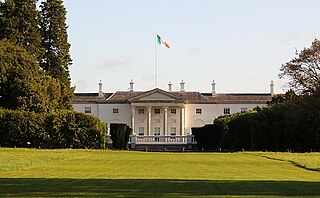
Áras an Uachtaráin, formerly the Viceregal Lodge, is the official residence and principal workplace of the President of Ireland.
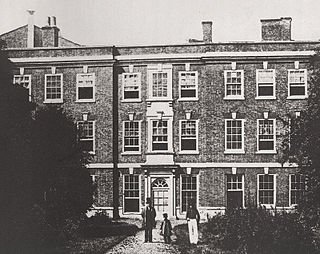
Exeter House was an early 17th-century brick-built mansion, which stood in Full Street, Derby until 1854. Named for the Earls of Exeter, whose family owned the property until 1757, the house was notable for the stay of Charles Edward Stuart during the Jacobite rising of 1745. Exeter House was replaced by offices, which in turn were replaced by Charles Herbert Aslin's Magistrates' Courts, built on the site during 1935. The courts were closed at the beginning of 2004, and after a decade vacant the building returned to use as an office development, Riverside Chambers.

The Park–McCullough Historic Governor's Mansion is one of the best-preserved Victorian mansions in New England. It is a thirty-five room mansion, set on 200 acres of grounds, and located off Vermont Route 67A in North Bennington, Vermont.

Vanderbilt Mansion National Historic Site is a historic house museum in Hyde Park, New York, United States. Designated a National Historic Landmark in 1940, it is owned and operated by the National Park Service.
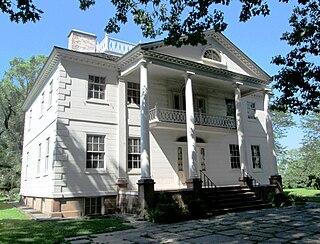
The Morris–Jumel Mansion is an 18th-century historic house museum in the Washington Heights neighborhood of Upper Manhattan in New York City, United States. It is the oldest extant house in Manhattan, having been built in 1765 by British military officer Roger Morris, and was also home to the family of socialite Eliza Jumel in the 19th century. The New York City government has owned the house since 1903. The house's facade and interior are New York City designated landmarks, and the building is a National Historic Landmark and a contributing property to the Jumel Terrace Historic District.

The Simpsons house is the residence of the Simpson family in the animated sitcom The Simpsons and in The Simpsons Movie. The house's address is most frequently attributed as 742 Evergreen Terrace. In the series, the house is occupied by Homer and Marge Simpson and their three children: Bart, Lisa, and Maggie.

Sutton Scarsdale Hall is a Grade I listed Georgian ruined stately home in Sutton Scarsdale, just outside Chesterfield, Derbyshire.
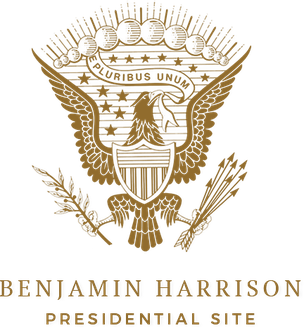
The Benjamin Harrison Presidential Site, previously known as the Benjamin Harrison Home, is the former home of the 23rd president of the United States, Benjamin Harrison. It is in the Old Northside Historic District of Indianapolis, Indiana. Harrison's 16-room house was built from 1874 to 1875. It was from the front porch of the house that Harrison instituted his famous Front Porch Campaign in the 1888 United States presidential campaign, often speaking to crowds on the street. In 1896, Harrison renovated the house and added electricity. He died there in a second-story bedroom in 1901. Today it is owned by the Arthur Jordan Foundation and operated as a museum to the former president by the Benjamin Harrison Foundation.

Tatton Hall is a country house in Tatton Park near Knutsford, Cheshire, England. It is designated as a Grade I listed building and is open to the public.

The Executive Residence is the central building of the White House complex located between the East Wing and West Wing. It is the most recognizable part of the complex, being the actual "house" part of the White House. This central building, first constructed from 1792 to 1800, is home to the president of the United States and the first family. The Executive Residence primarily occupies four floors: the ground floor, the state floor, the second floor, and the third floor. A sub-basement with a mezzanine, created during the 1948–1952 Truman reconstruction, is used for HVAC and mechanical systems, storage, and service areas.

Walton Hall is a country house in Walton, Warrington, Cheshire, England. It is recorded in the National Heritage List for England as a designated Grade II listed building. The hall and its surrounding garden and grounds are owned and administered by Warrington Borough Council.

The Harvey P. Sutton House, also known as the H.P. Sutton House, is a six-bedroom, 4,000-square-foot (370 m2) Frank Lloyd Wright designed Prairie School home at 602 Norris Avenue in McCook, Nebraska. Although the house is known by her husband's name, Eliza Sutton was the driving force behind the commissioning of Wright for the design in 1905–1907 and the construction of the house in 1907–1908.

William Patterson Alexander was an American missionary to the Kingdom of Hawaii. His family continued to influence the history of Hawaii.

Amos Starr Cooke was an American educator and businessman in the Kingdom of Hawaii. He was patriarch of a family that influenced Hawaii during the 20th century.
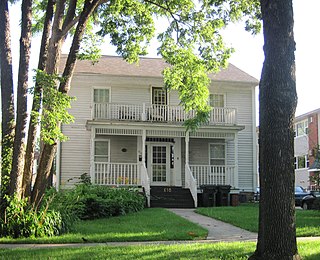
The former St. Mary's Rectory is a historic building located in Iowa City, Iowa, United States. Now a private home, the residence housed the Catholic clergy that served St. Mary's Catholic Church from 1854 to 1892. At that time the house was located next to the church, which is four blocks to the west. It was listed on the National Register of Historic Places in 1995.

The Bauer Manor, also known as the Davenport House or Davenport Hotel, is a hotel located at 1280 U.S. Route 12 near the unincorporated community of Tipton in Franklin Township in northern Lenawee County, Michigan. It was designated as a Michigan State Historic State on May 18, 1971 and listed on the National Register of Historic Places on May 4, 2007.

Hillingdon Court is a Grade II listed mansion in Hillingdon, within the London Borough of Hillingdon. Originally built in 1858 as the family home of the Mills family, the mansion has formed part of the ACS Hillingdon International School since 1978. Much of the remaining grounds came under public ownership in 1928 and have become public parkland and housing.
Quernmore Park Hall is a grade II* listed Georgian country house which stands in a 20-acre estate in the village of Quernmore, part of the City of Lancaster district of England.

The William Lanford House is a historic residence in Huntsville, Alabama. The house was built by William Lanford, a native of Spotsylvania County, Virginia. Lanford's father, Robert, was an early land speculator who came to Huntsville from Nashville along with LeRoy Pope. William purchased 1,975 acres in 1843 and built his house in 1850. Lanford's daughter, Mary, married physician John R. Slaughter in 1853, who later moved his practice to the house in William Lanford's later life. Upon his death in 1881, the land was divided among Lanford's daughters, with Mary and Dr. Slaughter remaining in the house. After Mary's death in 1913, the house was sold to William Olin Camper in 1919. Camper and his brother Robert were merchants in Madison and Huntsville, and owned the Twickenham Hotel in Huntsville.























